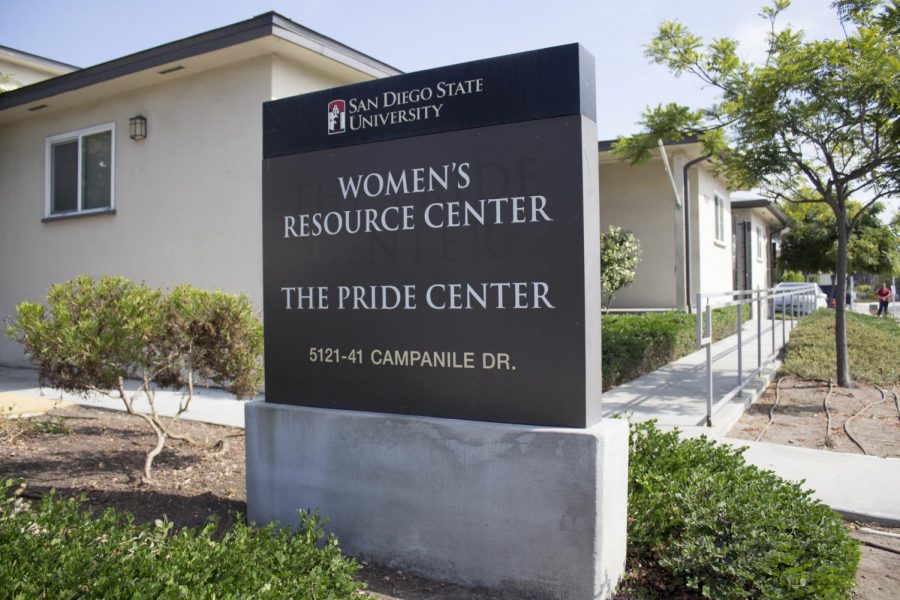San Diego State students will soon see an increase in their fees beginning in the fall 2020 semester.
President Adela de la Torre approved both the Health and Wellness Fee and the Instructionally Related Fee on Dec. 12 after receiving final recommendations from the Campus Fee Advisory Committee.
Tuition fees will increase by $55 per semester for the Health and Wellness Fee and by $40 per semester for the IRA fee, marking a $95 per semester total increase.
The fees will go toward increasing mental health resources and funding three new identity centers on campus.
The university’s fee committee held its final meeting on Nov. 22 after completing the 41 scheduled student forums and compiling feedback. The committee recommended approval of both fee increases to President de la Torre.
More counselors will be available to students on campus in accordance with the one therapist per 1,500 students national standard. The counseling department will also hire additional case managers and establish an after-hours phone line.
“There was a genuine need for mental health support from the students,” Associate Vice President of the Division of Student Affairs Andrea Dooley said. “We’re working very hard to make this happen for fall 2020. We got some strong feedback with the need for mental health and we’re excited to deliver for students and help the SDSU community.”
About 10% of the SDSU student population uses the mental health resources offered on campus, which is high compared to other universities, SDSU Director of Counseling and Psychological Resources Jennifer Rikard said.
The planned identity centers – including the Native Resource Center, the Latinx Center and the Asian American Pacific Islander/Desi Center – will be built and fully open by the fall 2020 semester, Assistant Chief Diversity Officer and Director of Identity Centers Agustín “Augie” Garibay said.
The funds from the IRA fee will not go towards the construction of the centers but rather their staffing and programming, Garibay said.
The Latinx Resource Center will be located on the first floor of the Love Library near the Chicano/Chicana collections and the Native Resource Center will be located in room 202 of the College of Arts and Letters building.
Both will have soft openings in February and March with the campus president and members involved in the community. The division is still searching for a location for the Asian American Pacific Islander/Desi American lounge, Garibay said.
Although Dooley said much of the student feedback from forums was in favor of increased resources for mental health counselors, students were concerned about the prospect of additional fees. Anonymous student feedback from the forums, which is publicly posted on the university’s Business and Financial Affairs website, raised concerns over the added costs the two fees would place on students in the future.
“Why propose the ARC fee and Mission Valley last year before mental health?” one student wrote. “The university — if it really cared — would shoulder the fee increases instead of pushing it off onto students.”
Other students were in agreement with this kind of feedback, even after the approval.
“While I’m glad our mental health facilities and resource centers can finally receive desperately-needed funds, it is disappointing that an inauguration, a revamped gym and a forced sophomore housing program were prioritized before such,” political science sophomore Casey Ehrlich said. “I feel like struggling resources for students should have been prioritized before.”
Public relations junior Rodizza Baytan said she supports the IRA fee increase to help fund the Asian American Pacific Islander/Desi American lounge — an important center for boosting resources for the AAPI community on campus.
She also said her community college advertised the availability of mental health counselors more so than SDSU.
“At my community college, they had a lot of counselors that would come in during class, randomly just to let them know that they’re there for students,” Baytan said. “I felt good knowing that they were there and available to students. I haven’t experienced that here, which I was surprised about.”
Although much of the negative feedback from the student forums focused on financial burdens, Rikard emphasized how each forum’s presentation pointed students toward other financial tools and resources.
“It was an opportunity to tell students how funds get allocated and through what processes,” Rikard said. “We knew an increase in fees could be a burden, and so we made sure to include information about financial aid and scholarship tools.”
The Return to Aid plan was created in anticipation of student financial concerns.
The plan, influenced by similar programs in the University of California system, would allow students to have access to money without having to be eligible for financial aid through FAFSA. Although specific details regarding the system are yet to be determined, Dooley said the program would give out 2,000 awards per academic year. International students would also be eligible.
Although the fees were approved in December, California State University Chancellor Timothy P. White reviewed the forum process to ensure the university had completed a detailed study that followed the CSU requirements.
The review was completed Jan. 7, according to a written message sent out by the chancellor’s office. White then delegated authority for the oversight and adjustment to the fees to President de la Torre.









